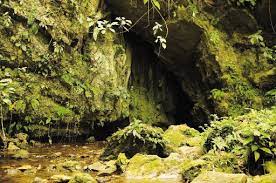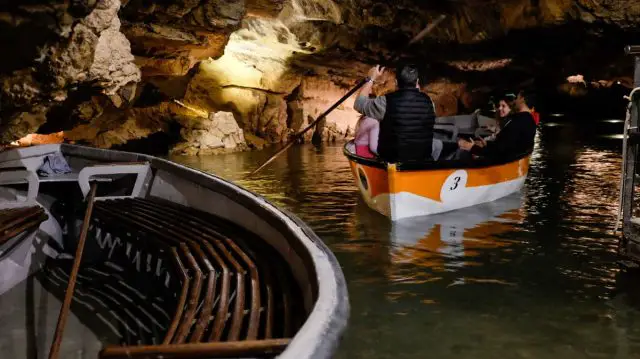The caves are witnesses to the changes that occurred on the Earth during its formation. Over thousands of years, these underground cavities have been sculpted very slowly until, in some cases, they have formed a complex network of rocky structures that preserve the traces of time.
These formations -of great scenic beauty and whose exploration represents a challenge, even for the most experienced- are valuable source of scientific information in various areas. For example, they constitute a historical record of the climate and have a high preservation potential. Many of the largest archaeological finds, including prehistoric cave paintings, have been found in caves.
In Costa Rica, knowledge about these natural cavities is scarce. It is estimated that more than 50% of the caves have not been fully studied. This can be confirmed by the little research available on such sites of great geological value.
Speleology, as a branch that studies the origin and formation of caves, began in our country in the 1960s in Barra Honda, Guanacaste. This process culminated in the creation of the national park in 1974, which protects the best-known group of caves in the country and the most visited by national and foreign tourism.
In that same decade, some exploration activities in caves were already carried out, in charge of people fond of mountaineering. This practice gave rise to the creation of several groups dedicated to caving.
Dr. Andrés Ulloa Carmiol, geologist and speleologist from the University of Costa Rica (UCR), has carried out various studies in this field. His doctoral thesis at the University of Nova Gorica in Slovenia dealt with volcanic caves in Central America; among these, the cave of minerals, located in the Irazú volcano (one of the caves with the greatest diversity of minerals in the world). Recently, Ulloa carried out, together with three other researchers from the UCR, a study on the Venado cave system, another of the country’s geologically important formations.
These caves are located at the top of Venado de San Carlos, a town near La Fortuna, in the province of Alajuela, in an area where pastures and pastures suitable for livestock, the main economic activity, predominate.
For several years, the potential of coal and hydrocarbons that this region presents, which has a value from the energy point of view, has been evaluated.
Local cave systems

The academic work directed by Ulloa, published in 2021 in the Geological Review of Central America, contains “a detailed analysis from the geological, geomorphological and speleological point of view of the caves developed in the limestones of the Venado formation”.
This expert, in the company of Alejandro Argüello, Adrián Obando and Mariángela Vargas, studied the sector known as the El Túnel stream. In addition, they collected information from the last decade generated by multiple speleological and geological expeditions.
“The Venado caves have been the most explored for logistical reasons, due to their proximity to the metropolitan area”, says Ulloa, researcher at the UCR’s Center for Research in Geological Sciences (CICG).
One of the findings is that these caves are defined as a system, the largest in Costa Rica known so far, with almost 5 km of passages interconnected by groundwater. The second most extensive cave system is that of Cerro Corredor, in the southern part of the country, with 3,568 meters of mapped passages.
The scientists reached the above conclusion after having made studies and corroboration through analysis in the three main caves. For this, they used tracers of xanthene, an organic dye that allows its easy identification in bodies of water.
They also produced detailed maps of the surface geomorphology of the area, supported by aerial photographs and digital terrain models. In addition, they made the plans of the 3 main Venado caves: Gabinarraca, Menonitas, and Higuera, of which they generated 3D models with various computer programs.
From this work, what the geologist stands out the most is the “carpentry” to draw up the plans. “For each of these the data collected by many people during their free time was taken. The plans included 400 topographic stations and in each one the cave was measured, drawn, a diagram was made and an attempt was made to represent what was observed. It is an ant job that was achieved thanks to the collaboration of the University with speleologists, mainly with members of the Anthros speleological group”, he relates.
Geological origin

The caves developed in carbonate or limestone rocks are the most abundant on our planet. The rocks are so named due to the presence of sedimentary rocks composed mainly of calcium carbonate minerals.
These karst formations (German term derived from Karst, the name of the Italian-Slovenian region of Carso) have originated as a result of processes of dissolution of the rocks by the effect of water.
“At the beginning, the rock dissolves only a few millimeters; then the process is faster. During the first 5,000 years, the fractures grow no more than 5 mm, but the next 5,000 years the conduit or fracture that forms in it can reach up to 3 m in diameter, because the water can flow faster through the fractures”, Ulloa details.
This geological process of karst formation is what gave rise to the Venado caves, a very rainy area, a factor that influences the dissolution of carbonate rocks. Such caves have the peculiarity of being covered by volcanic deposits. This generates a lot of sediment input to the cave system, which is reflected in the morphology of some passages.
One of the attractions of Venado is the scenic beauty of the cavities and the amount of elements that they protect. For example, in Gabinarraca you can see waterfalls, rivers and very white formations, Ulloa highlights.
Another point of interest for scientists, cavers and tourists are the speleothems or mineral formations that are deposited in the caves. Among them, stalactites, stalagmites, crystalline aggregates in the walls and gypsum cavities stand out.
The adventure that means being inside an underground vault represents for many people a reason to visit these places. Silence, darkness, and walking or crawling through narrow passageways add adrenaline to the experience.
Cave research requires highly specialized field work, and it also carries a number of risks, from vertical climbs to explore upper passages or descending several meters away in the dark, to ending up drenched in water and covered in mud.
More and more, caving has become an area in which different disciplines intervene. Some researchers are interested in the biological part of the caverns to know what kind of life can exist in these places with low energy and little light. For this reason, studies have begun on microorganisms that live in these environments and that could be a source of food or energy transformation.
“For me, there is a lot of fascination inside a cave. There are many things that can be studied”, concludes Ulloa.

